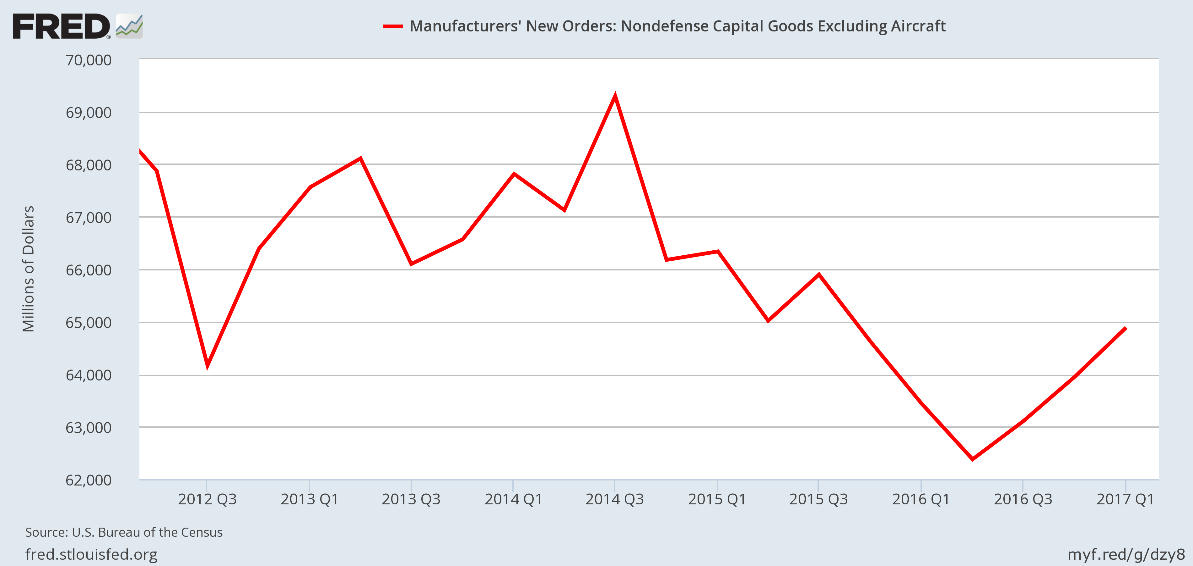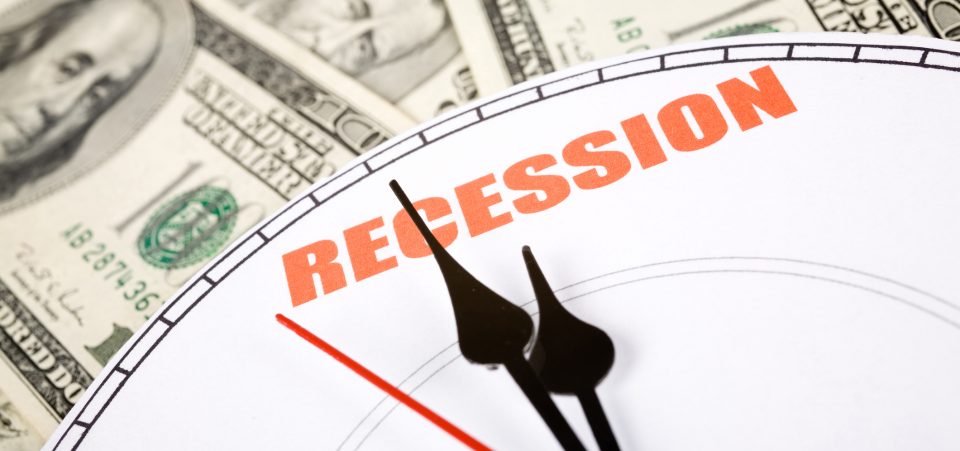Recession Could Be Coming Soon
Three economic indicators I follow strongly suggest that a recession in the U.S. economy is likely to hit in late 2017 or early 2018.
It all starts with the fact that American companies are stockpiling too much cash.
Economic growth occurs when companies spend money on investing in their businesses. When they start hoarding cash instead, a recession usually follows.
At the end of the third quarter of 2016, cash and short-term investments at S&P 500 companies (excluding financial companies) stood at $1.54 trillion. This was the highest amount on record! (Source: “Q3 Cash Balance Reaches New High, Grows 7.6% to $1.5 Trillion,” FactSet Research Systems Inc., December 21, 2016.)
At the end of 2010, cash and short-term investments at S&P 500 companies were well below the $1.0-trillion mark. In a matter of a few years, S&P 500 companies have increased their cash holdings by 50%.
Second, capital spending is on the decline. As I said earlier, companies are choosing to hoard their cash, as opposed to spending it on growing their businesses. Companies these days would rather buy back their own stock (in order to make their earnings look better) than put that money toward capital spending and invest in their businesses.
The chart below shows capital goods orders at manufacturers.

(Source: “Manufacturers’ New Orders: Nondefense Capital Goods Excluding Aircraft,” Federal Reserve Bank of St. Louis, last accessed May 2, 2017.)
The above chart clearly shows that capital spending in the U.S. economy has been slowly deteriorating since 2012.
Historically, when we look back at the orders for capital goods at manufacturers, we find that whenever they start to trend lower, a recession usually follows.
Finally, the job growth just isn’t there.
In March, only 98,000 jobs were added to the U.S. economy. This was the lowest number of jobs added to the U.S. economy since May 2016, and well below the six-month average of around 188,000 jobs per month. (Source: “All Employees: Total Nonfarm Payrolls,” Federal Reserve Bank of St. Louis, last accessed May 2, 2017.)
While the official unemployment rate is below five percent, that rate is misleading because it excludes people who have given up looking for work and those who have part-time jobs but want full-time jobs.
Looking at all these indicators, it’s really hard to be optimistic about the U.S. economy. The worst part is that these aren’t the only indicators suggesting that a recession could be ahead in late 2017 and/or early 2018. The euphoria in the stock market is masking the truth behind the weak U.S. economy. I urge caution for my readers.






